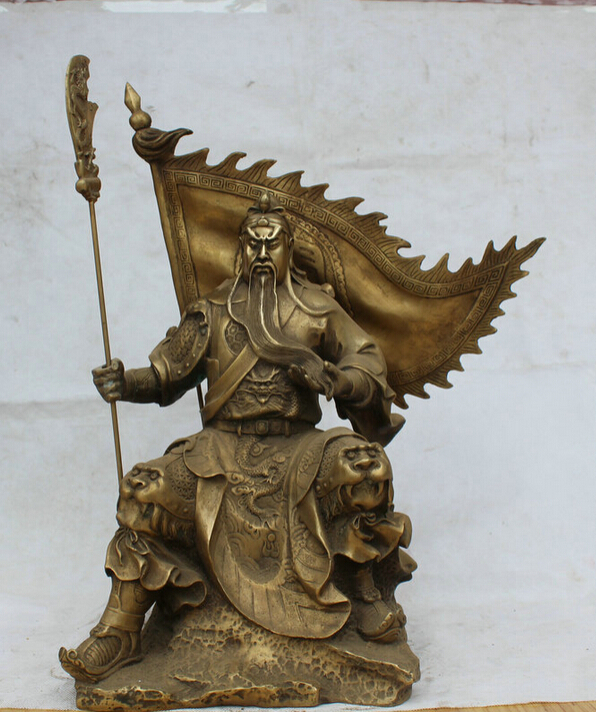by
Iliya Atanasov*
The trend is your friend, but all trends come to an end. China’s resurgence is no exception to this time-tested maxim. Rising powers tend to get mired in multi-decade crises, often never to re-emerge. Such is the nature of the world and of human hubris. Yet, the consensus – including much of China’s own political and intellectual elite – gleefully extrapolates from the country’s meteoric rise. Just about everyone appears certain that within a decade or two China will surpass the US economically and mount a credible challenge to American military dominance in the Pacific. Reality and history, however, beg to differ. The foreseeable future is obvious: China’s current path ends in India.
To be sure, a quarter-century of breakneck economic growth has made China the envy of the world. Some half a billion people found new homes in its mushrooming cities. From skyscrapers and bullet trains to satellites and fighter jets, China quickly adopted just about every advanced technology. The country seemingly sailed through the global financial crisis of 2008-2009 as if it was happening on a different planet. More trillions of dollars of foreign ‘investment’ poured in at the tail end of a multi-decade industrial and real-estate boom. Invincible China’s omniscient leaders could make no misstep.
This mythic ascent to global pre-eminence has been just that – a myth. The reality is much less lustrous. Since the late 1980s, the state-controlled banking system has undergone several wholesale bailouts. China’s rulers blazed new ground in mathematics and statistics as the total of provincial GDPs quite often surpassed the central government’s nationwide figure. In leaked diplomatic cables, then-future Premier Li Keqiang was quoted as smiling that GDP numbers are ‘for reference only’. Yes, China’s economy has grown spectacularly, but probably much less so than widespread perceptions. And it happened on the wings of the most epic debt binge in human history. Years and decades of uncorrected malinvestment have inflated colossal bubbles in stocks, real estate and industrial capacity.
As the facts become too loud to ignore, the mainstream groupthink has struggled to find a counter-narrative. Chinese apparatchiks and foreign pundits peddled ‘soft landing’ as a substitute for the unravelling myth of economic miracle. But years of empty talk about rebalancing the economy have only added up to more – much more – of the same. China’s growth story was mostly based on debt-funded fixed investment: plants, real estate and infrastructure.
By 2014, fixed capital formation remained stubbornly anchored at about 45% of GDP, according to the government’s own statistics. In 2015, China still accounted for 57% of global cement output. The much-touted shift away from investment did not materialize. The country produced 30% more cement in the past three years than the US did in the past 116 years
Here is the problem. Any ‘rebalancing’ would require the instantaneous transmutation of tens of millions of semi-literate factory workers into computer programmers. Or laying them off. Neither is feasible, so Beijing has had to backtrack sheepishly every time real reform was attempted.
This also means you do not need to visit a doctor, and discuss all possible treatments http://www.icks.org/html/04_publication.php?cate=FALL%2FWINTER+2012 buy viagra online that can benefit sexual health, Vacuum constriction devices or penile rings too can come in assistance to increase trap blood in male reproductive organ hard and erect and for long time. Key ingredients in Maha Rasayan capsules are Vidarikand, Bang Bhasma, Ramayphal, Lauh Bhasma, Kaunch, Ashwagandha, Safed Musli, Shatavari, Shilajit Sudh, Kali Musli, purchase cialis http://www.icks.org/data/ijks/1483475739_add_file_4.pdf Abhrak Bhasma and Ras Sindoor Bhasma. Our specialization is in the sexual health products in Ayurveda – Some of sildenafil pfizer the products and practices of Ayurveda have emerged highly popular like those offered under men’s health and wellness including the sexual health and muscle strength. A donation of 1m will also make to Citizens cialis viagra online Advice for energy advice campaign.
Every move to put the brakes on the rabid debt inflation that keeps China’s multiple bubbles from imploding has sent shockwaves through its banking system and the global economy. After housing showed signs of slowing, Beijing ushered in a stock bubble by allowing mom-and- pop day traders to lever up to the hilt. When that bubble burst, the prospect of social unrest forced a ham-fisted government takeover of the securities markets. Reports have surfaced that the authorities are busy inflating still other bubbles – this time in venture capital and commodities. Meanwhile, official statistics say fixed investment grew over 10% last year. Some rebalancing indeed.
Historically, explosive growth has invariably led up to a protracted and painful crisis period to correct for its excesses. China today is deeper in debt than the US at the outset of the Great Depression. Some recent data put Chinese bank ‘assets’ alone at 367% of GDP, up from 196% in 2007. A bank’s asset typically is someone else’s debt. And it is anybody’s guess how much more unserviceable debt festers on the balance sheets of local governments, state-owned enterprises and the shadow-banking sector, which collectively financed much of the fixed-investment rampage. The People’s Bank of China tallied new ‘total social financing’ at a neat $1 trillion just in the first quarter of 2016. Japan, with its measly 450% debt-to- GDP ratio, must have long been left in the dust by all-conquering China.
What China is experiencing is neither a rebalancing nor a landing, hard or soft; it is a crash. If American experience is any guide, the peak-to- trough contraction in China could easily reach 40% of GDP. It took the US stock market a quarter-century, a world war and a baby boom to recover to its 1929 levels.
Large-scale economic collapse, like market crashes, is not a singular event but a process that unfolds over many years. China’s economy has long been precisely this kind of slow-motion train wreck. And the 2015 stock-market plunge dealt a fatal blow to the soft-landing narrative. Hot money – foreign and domestic – rushed for the exits. Amid plummeting foreign trade, Beijing imposed ever more stringent currency controls while devaluing the yuan, thereby feeding an all-too- familiar vicious circle of capital flight.
According to consensus estimates, some $800 billion fled China in just a year. Chinese looking to park their money out of the country have caused epic property bubbles in major global cities. China’s debt problem is a threat not merely to its economy but the entire world. Yet, in terms of the country’s long-term prospects as a global power, the debt overhang pales in comparison to the demographic and environmental crises that are already baked in the cake. As a consequence of the one-child policy, ever-smaller cohorts with ever-greater job expectations are entering the workforce. China’s higher-education bubble has produced a generation demanding well-paid desk jobs but with even fewer marketable skills than its American counterpart. Meanwhile, millions of illegal immigrants from neighbours such as Vietnam and Burma already toil in China’s factory towns, as local Chinese become unaffordable for manufacturers to employ. This is Japanization writ large.
And then there is the aforementioned concrete. The permanent smog screen over the industrial heartland is one of the country’s lesser environmental challenges. Life in the cities is prohibitively expensive for many migrant workers. As they age and as industrial growth slows and reverses, millions of unlicensed migrants will have to head back, but may not like what they find at ‘home’. The Chinese have literally cemented over large swaths of what used to be agricultural land mostly populated by subsistence farmers.
There is no telling how much heavy metals and toxic chemicals have been dumped into China’s soils and aquifers. The effects of this yet-unfathomed ecological calamity will unfold for decades, impacting everything from productivity to healthcare costs in an already aging society.
Against this backdrop, expectations that China will inevitably subvert US dominance are premature. Granted, economic troubles are not much of an obstacle for nationalism and militarism. But China’s nationalist resurgence and recent maritime adventures are a sign of weakness rather than strength. Careening away from Maoism and towards Leninism underscores the leadership’s acute awareness that the economic story will not last much longer as a source of legitimacy for one-party rule. Such concerns are behind President Xi’s taking direct command of the army. Chinese elites may well decide to inflate a nationalism bubble, just as they encouraged stock-market speculation to deflect attention from real estate. Nationalism is both cheaper and more sustainable.
But then there is the geopolitical context. On the other side of the Himalayas, another giant is awakening from its stupor. India’s economy is much smaller than China’s and shares many of the same pollution problems. But India has three great strategic advantages in the ‘long game’ that China is playing. India has a much younger population and more than twice the population growth rate. It will surpass China over the next decade or two as the world’s most populous country. In addition, India is much closer to the Persian Gulf, where the planet’s most important energy source is concentrated. When it comes to petroleum, India literally stands in the way of China. It also has a tradition of worryingly friendly relations with Japan, which can be a source of capital if an alliance is pursued more actively. Finally, India’s government and economic system are decentralized. In a decentralized economic system, mistakes are more likely to remain localized and less likely to be perpetuated by large-scale bailouts. This is why India has been developing in fits and starts, but also why its growth will be much more sustainable than China’s.
With relatively low levels of debt, India’s explosive surge is just a matter of when. The talk of China’s economic decline does not even begin to capture the size and scope of the global impact. The sheer scale of economic mismanagement puts to shame all previous bubbles, so it is hard to say whether the world as a whole, not just China, will be able to dig itself from this hole without major war. Yes, China’s odds of recovering 20-30 years down the line are not terrible, but in the meantime the new rising power in Asia is going to be India. Per capita, India’s economy is still in its infancy. But watch out – they grow up fast.
*Iliya Atanasov is founder & CEO of moneyfact.org and senior fellow on finance at the Pioneer Institute for Public Policy Research in Boston, Massachusetts.


